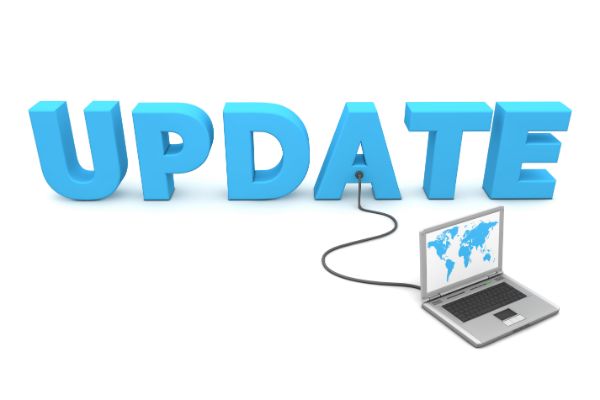Disclaimer: This post may contain affiliate links, meaning we get a small commission if you make a purchase through our links, at no cost to you. For more information, please visit our Disclaimer Page.
If you don’t update Windows when new updates come up, you leave your system vulnerable to security breaches. You also deprive your system of new features and won’t enjoy the optimum experience Windows has to offer. There are almost zero benefits of not updating Windows, so do what you need to.
Table of Contents
What Happens If You Don’t Update Windows? (6 problems)
Updating any software can be tedious, especially when the updates roll out more often than you’d like. You may not want to install Microsoft updates to maintain compatibility with older software and hardware. Also, breaking up your existing software setup might be a no-go area for you.
Regardless of how you feel about downloading large updates over the web, you should still update Windows. Consider these disadvantages of not updating Windows:
You Lose Bug Fixes
Bugs are a permanent part of every operating system, and they can cause various functionality problems. They could range from certain scenarios that cause the program to crash to missing menu items. Microsoft updates include the most recent bug fixes that the developers have applied as a part of its extended support.
Choosing not to update your Windows OS means your system won’t enjoy the benefits of these bug fixes. If you’re concerned about updates introducing bugs, be at ease because it’s not a frequent occurrence. In essence, installing updates doesn’t create as many issues as it fixes.
You Weaken Your Security
The techniques for cyber-attacks change at an alarming rate, increasing your system’s security vulnerabilities. Updates usually fix loopholes and patch vulnerabilities that could otherwise be used to attack your system. Again, this patching up is part of Microsoft’s extended support service.
Anti-spyware, anti-virus, and other security setups can protect your computer to an extent, but up-to-date software is the ultimate. Leaving your system with older versions of an operating system opens it up to hacking attacks and malicious codes.
No Software Compatibility
Many software developers keep up with operating system specs and design new software to match OS updates. This allows them to capitalize on the increased processing power provided by the updated operating system.
Likewise, Microsoft’s updates often have codes to maintain Windows’ compatibility with other software on your system. Whether it’s a new version of a video-calling app or a game, you need these updates for a seamless flow with the software.
Not all software is “backward compatible,” so your aging operating system may not work with new apps or software you download.
You Miss Out On Performance Improvements
Windows updates sometimes come with optimizations to increase the operating speed of your OS and other Microsoft software. Microsoft’s mainstream programs can always get better, so developers constantly work to improve them. As they work, they make sections of codes more efficient and streamlined.
The results could mean a more intuitive interface or the accommodation of a specific motherboard. Not updating your windows is a sure way to miss out on all potential performance improvements in it. You also forego any new feature that Microsoft brings on board.
Your Hardware Becomes Slower
Software updates might roll out faster than hardware updates, or vice versa. Regardless of the order, they are usually made to pair well. Old software on new hardware can cause it to lag and eventually crash, and vice versa.
It’s like putting an Aston Martin Vantage engine into a blender and expecting a miracle. Since this miracle is impossible, it’d be best if you update your Windows, maintaining the hardware-software balance.
If you’re super concerned about the updates and what they could do to your system, you can review them before installing them. Look through the description carefully, note what they say the update will “fix,” and test it.
You can choose to apply only updates that are appropriate for your environment after they pass your tests. Of course, your computer won’t stop working if you don’t update Windows, but you shouldn’t take the risk.
Is It Ok to Not Update Windows?
Windows 11 is Microsoft’s most recent OS update, and its appearance might be too soon for you. Maybe you’re just getting the hang of Windows 10 (latecomer), and you’re wondering about your PC’s fate if you don’t upgrade.
Your hesitation in installing a Windows update on your system is understandable. Like I mentioned above, updates may come with issues, and sometimes their glitches are worse than the problems they supposedly fix. However, it’s not okay to not update Windows.
Microsoft won’t force you to upgrade to the latest version of Windows, but you’d be depriving yourself of a great experience. On the other hand, since your computer still works without an update, you may think that it’s okay. Well, it is for now, but it may have some problems with time.
Software companies often check for weaknesses in their system, and the updates contain solutions. However, if you don’t install any updates, your system will be prone to ransomware and malware infections.
Besides the major operating system updates, Microsoft releases minor updates frequently. The Windows operating system checks for updates once per day, and typically, it won’t find new ones. But there’s “Patch Tuesday,” which is the second Tuesday of every month.
Microsoft turns out a new update on Patch Tuesday, and it’s a batch of all the recent patches and fixes. Your computer will have to restart itself after installing these substantial updates. There’re also some “critical” updates Microsoft prioritizes, and it’s crucial to install them.
Running your system on older software exposes it to a higher risk of viruses and security threats. Wouldn’t it be better to update and have your computer safe and working efficiently?
Is Updating Windows 10 Necessary?
Updating Windows 10 isn’t usually necessary for Windows to function, especially if there’s a bad update. However, it would help if you had the update so unauthorized users don’t access your computer.
Windows isn’t perfect, but they try to fix the errors and security vulnerabilities with updates. Unfortunately, the Windows operating system code has errors, outdated software elements, incompatibilities, or security loopholes.
Security problems are often identified in different parts of Windows, including the main platform, Internet Explorer, IIS, and ActiveX. It’s a risk not to patch the security breaches, even if you don’t run the software that has the problem. Being installed on your computer is enough risk.
Microsoft improves Office security with each update, adds Security Essentials utilities, adds malware definitions to its Windows Defender, etc. There’s also the occasional Windows hotfix for addressing serious issues like random system lockups.
Considering these benefits, it’s vital to update Windows 10 if you want to keep your computer from intrusions.
Fortunately, you won’t have issues maintaining Windows 10 until October 14, 2025. Microsoft’s Fixed Lifestyle Policy covers its many products. The company offers at least five years of Mainstream Support followed by five years of Extended Support.
Both supports include program updates, security updates, extra help you can pay for, and online self-help topics. However, using Windows 10 beyond October 2025 will become riskier. This is because Microsoft will no longer release new security updates for the operating system past October 14, 2025, so as time goes on, hackers may find more exploits.
There’ll be no repair update even if you discover a new security loophole after that date. However, just in case you want to stick with your Windows 10 until 2025, here are some safe online practices you can employ:
- Keep your apps updated
- Constantly update the anti-malware software on your computer
- Always update your web browser
- Use two-factor authentication whenever you can
- Don’t visit suspicious sites on the web
- Try not to open random email attachments
- Only run downloaded programs if they’re from a trusted, verified source
- Maintain frequent backups, even rotated offline backups
- Don’t re-use passwords and use a secure password
Honestly, though, how many people floss after every meal because the dentist says so? Not everyone will do what it takes to stay safe online. So, for you, the average Windows computer owner, the best choice is to update to the latest version.
Unless you encounter issues that require you to move back to an older version, stick with Windows 11. It’ll also be nice to practice always the safety tips above to decrease your chances of getting malware. Also, a handy tip is to do some research on what problems the newest update could cause or what issues it’ll fix.


